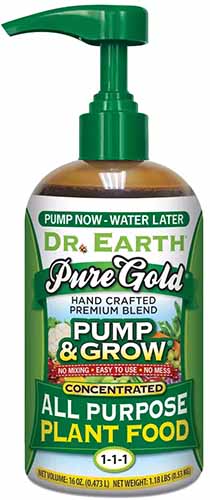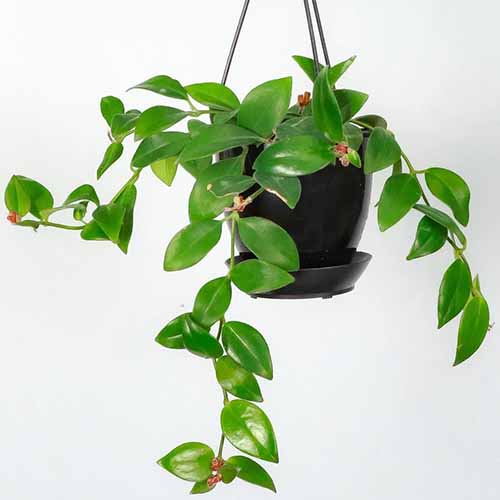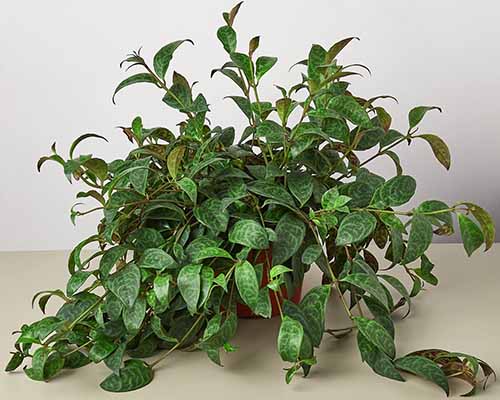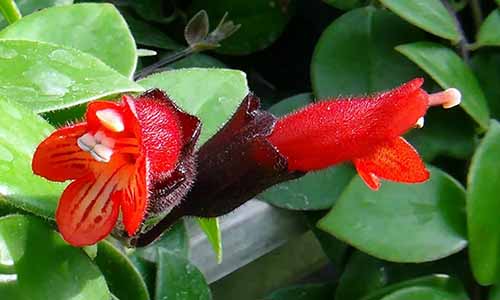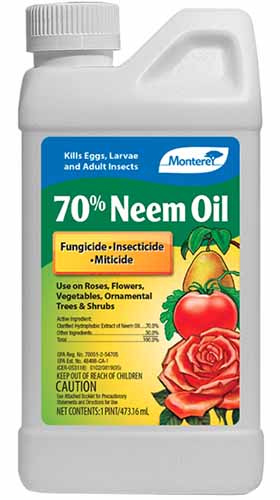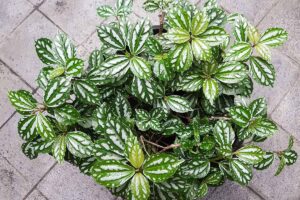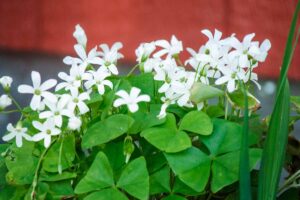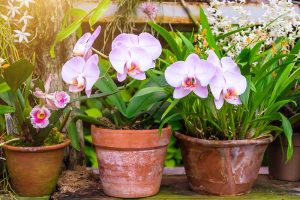Aeschynanthus spp.
While I admire the deft brushstrokes and outlet for personal expression involved in applying makeup, I myself don’t have the knack – and I’m too wary to put on the stuff.
But I’ve finally found a lipstick I can appreciate: plants in the Aeschynanthus genus that earned the common name “lipstick vine” thanks to their flowers, which look like lipstick emerging from a tiny tube as the buds open up.
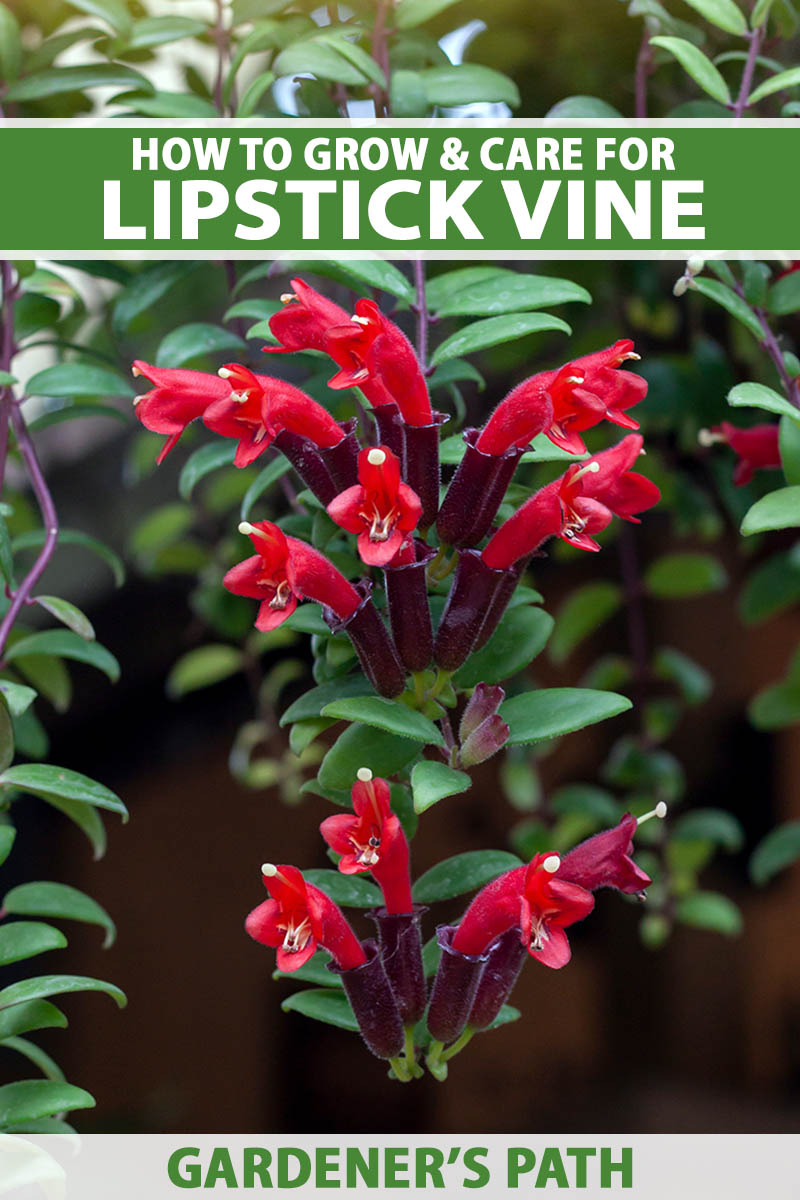
We link to vendors to help you find relevant products. If you buy from one of our links, we may earn a commission.
To me, their most special attribute is that they will produce these clusters of red or red-orange flowers indoors.
These showy plants originated in southern Asia, where the epiphytic vines drape from tree branches in damp forests.
When you grow Aeschynanthus species at home, it’s necessary to replicate the soil and growing conditions of their native range as closely as possible.
These evergreen perennials may be cultivated outdoors year-round only in USDA Hardiness Zones 10 to 11.
In this guide, I’ll share tips to grow and care for lipstick vine as an indoor plant, though you may choose to bring it outdoors for the warm months.
Here’s everything I’ll cover:
What You’ll Learn
What Is Lipstick Vine?
There are 150 known species in the Aeschynanthus genus and all of them are epiphytes. These belong to the Gesneriaceae family, which also includes African violets.
Species from this genus were first classified by botanist William Jack and so named a year after his death, in 1823.
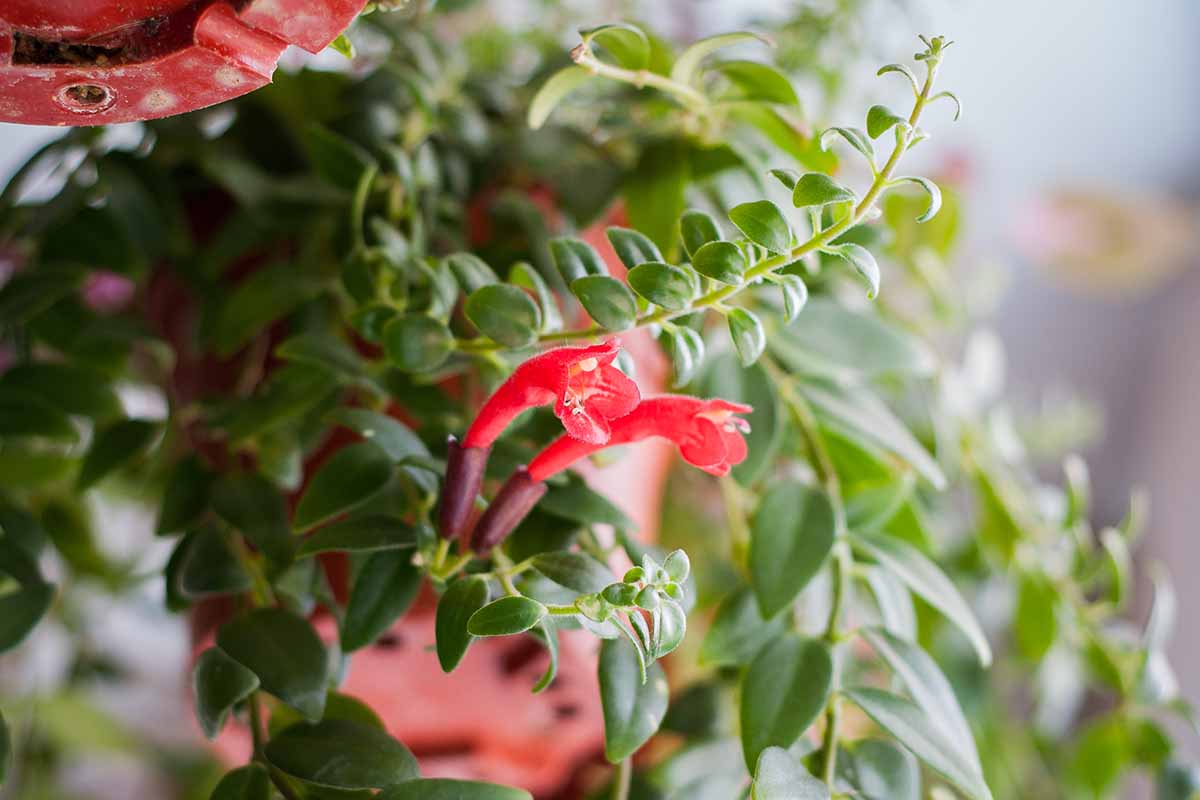
The genus name is a combination of the Greek word “aischne,” which translates to “shame” in English, and “anthos,” or flower.
Though the number of different shades and styles available from these plants couldn’t possibly compete with the multitudes of lipstick options lining the shelves at your local pharmacy or department store, there are numerous species and cultivars to choose from nonetheless.
The most common species in cultivation are A. radicans, A. longicaulis (syn. A. marmoratus) aka Black Pagoda, and A. fulgens (syn. A. evrardii), as well as hybrids and a number of cultivars.
Heard enough to be intrigued? Let’s move on from dreaming about these glorious blooming vines to growing them. Here we go!
Lipstick Vine Propagation
It may be possible to propagate lipstick plants from seed, but this method is unreliable, and cultivated varieties and hybrids will not grow true to the parent plant.
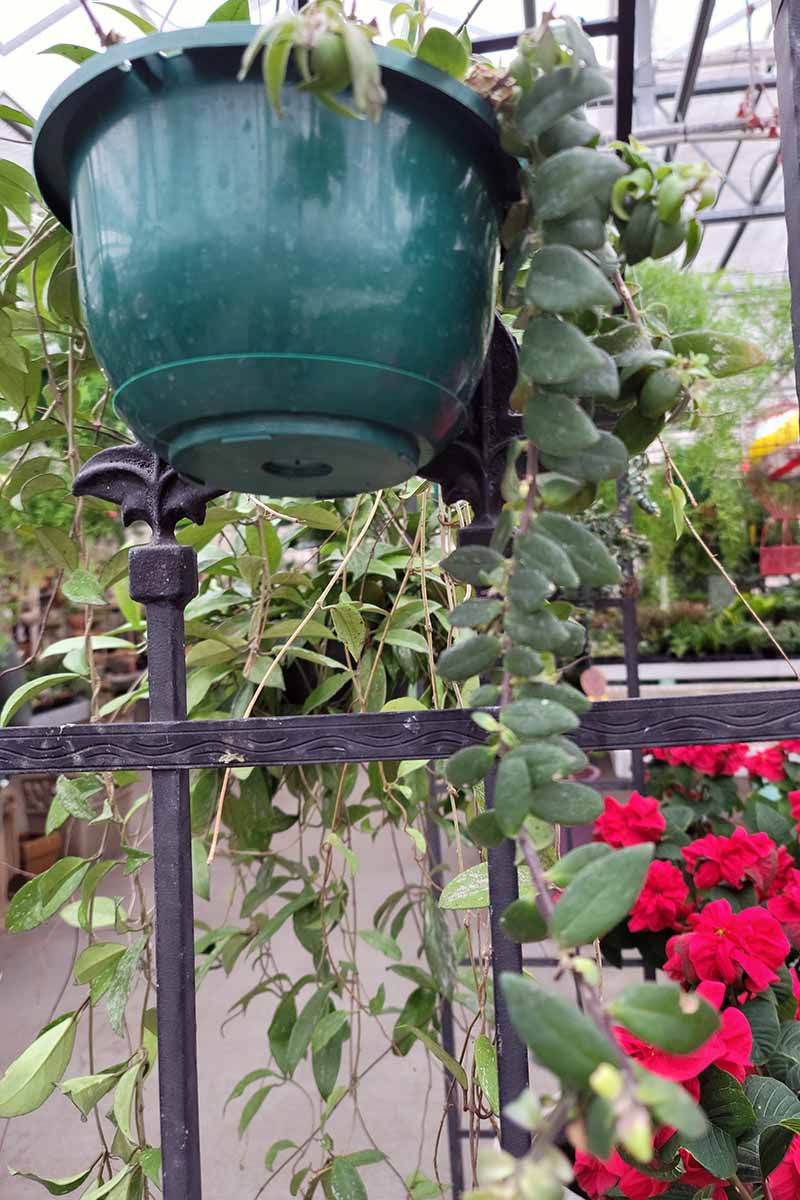
Lipstick plants will grow readily from cuttings, so if you have a friend who’s already discovered the joys of this flowering houseplant, you’re in luck.
There are two ways to root them:
In Water
Those long vines that the plants produce are excellent for rooting cuttings. The best time to take cuttings is in the spring and summer.
To initiate the process, you can cut a four-inch piece from the end of a healthy stem, just below a node.
Remove any flowers or buds, and pinch off the leaves from the bottom three inches of the stem, leaving at least two leaves at the top of the cutting.
Then place the cutting upright in a clear three- or four-inch-tall glass filled about two-thirds of the way with tepid water.
Make sure all of the cuttings are positioned with their leaves above the water line and at least one bare node below the water. This node is where the new roots will sprout.
Place the container in a location that’s at least 65°F, or ideally closer to 70°F at all times. It should also receive several hours of bright, indirect light each day.
If the water becomes cloudy, carefully drain it and replace it with fresh, tepid water.
Change the water anyway every four or five days to minimize the risk of harmful bacterial and fungal growth. Also, remove any cuttings that get slimy or develop brown or dead leaves and toss them.
Look for roots starting a week later, but note that the process may take several weeks.
Wait until the roots that form are at least half an inch long before transferring each cutting to a two-inch pot filled with an appropriate potting mix – which we’ll discuss below so keep reading!
Several can be planted together in larger pots, but be careful to avoid containers so large that the overabundance of soil may leave plants subject to rot.
In Potting Mix
Rooting a cutting in soilless potting mix starts with snipping cuttings as described above and removing the bottom leaves, making sure each cutting has at least one node.
You may want to dip the cut end in rooting hormone powder to speed the process.
Next, gently jab the cuttings into an African violet specialty formula potting mix that you’ve pre-moistened and allowed to drain. The bare node should be positioned slightly below the surface, with the leaves an inch or more above it.
Since you can’t expect a 100 percent success rate, I recommend placing at least four cuttings in pots four inches in diameter.
Again, you don’t want there to be too much vacant soil in the pot or the cuttings can easily succumb to overwatering and rot, just like more mature lipstick plants might.
Place the pot in a spot with a temperature of 65 to 70°F and that receives at least four hours of bright, indirect light each day.
Keep the mix moist by spraying the surface every day or two with water from a spray bottle. If it’s not too much trouble, you can increase your odds of success by slipping the pot into a clear plastic bag to improve moisture retention and increase humidity.
Expect the cuttings to form substantial roots and be ready for their own individual pots in the space of about eight weeks.
If any have clearly died instead of rooting, make sure to remove them promptly to reduce the threat of infection for the remaining cuttings.
Transplanting
To make sure a potted nursery start is healthy, check for shiny green foliage without leaf spots or signs of insect damage.
Also, get a look at the drainage holes in the bottom of the pot – don’t purchase any that have slimy brown roots protruding since these indicate deadly root rot.

Whether you’re transplanting a cutting you rooted yourself or a purchased start, make sure you select a proper growing mix.
You’re aiming for a moisture-retentive, well-draining medium, and using a potting mix formulated especially for African violets works well.
My preferred brand is Espoma. Their organic African violet potting mix is formulated with sphagnum moss, humus, perlite, limestone, and yucca extract.

Espoma African Violet Potting Mix
It’s available in four-quart bags via Amazon.
For more tips on choosing the right soil for different houseplants, see our guide.
Select a container with care, too. Unglazed terra cotta pots are out because they dry out too quickly for these plants that require consistent moisture.
Instead, opt for pots made of plastic, resin, and the like – something that retains moisture but is lightweight.
Once you’ve found your pot, you’ll want to fill it about halfway with moistened potting mix.
Ease the transplant from its container and place it so the crown will rest about an inch below the rim of the pot. If it’s young, it probably won’t have tangled roots; loosen them gently with clean fingers as needed.
Add more soil below the transplant if the soil level isn’t high enough. Then carefully fill in the pot to an inch below the rim, lightly firming the mix with your fingers so the plant is stable.
Once your transplants are in their new pots, place them in the same spot where they were rooting, or in their new home if you are planting purchased starts.
Hanging containers are a great idea for displaying lipstick plants. Sometimes the vines can exceed three feet long, so you’ll want a pot or basket that will look good hanging high on a wall or from the ceiling.
Indoors, these should be cachepots without drainage holes so they won’t drip on your carpet, with plastic nursery pots that have holes in the bottom for drainage placed inside.
This lightweight plastic wall planter sconce is a fun option. In a half-moon shape, it measures 12 inches across by six inches tall and wide and comes in seven colors, including black, white, and espresso metallic.
It can be mounted on its own or grouped with others in a pattern of your choosing to create a cascading display of lipstick vines indoors.
Each plant will need to be removed from the sconce for watering, and replaced when the liquid has drained out.
American Essence Topeka Wall Sconce Planter
The American Essence Topeka wall sconce planter is available online from Eplanters.com.
How to Grow Lipstick Vines
You can give your lipstick plants a strong start just by placing them in a hospitable location.

Follow through with proper and timely watering and fertilizing, and most of the work is done.
Here are the top considerations when growing a lipstick vine:
Temperature
To grow these vines indoors, keep the temperature in the 59 to 79°F range.
Anything between 65 and 70°F is considered the optimal range, and 65°F is the ideal temperature during the winter dormancy period.
Cooler temperatures in the winter also help to promote springtime blooms.
Light
These plants need at least four hours of bright, indirect light daily, but they should never be exposed to direct sunlight.
The ideal location indoors may be a spot within three or four feet of an east- or west-facing window in your home.
Direct sunlight will scorch lipstick vines, meaning the leaves will become brown and crisp. This may also stunt the plant’s growth. Avoid overexposure!
If too little light is an issue at your house, you can opt to use grow lights for a few hours each day.
But be careful about placement: Grow lights should be positioned at least 24 inches away from the vines, or they may scorch them the same way direct sunlight does.
Humidity
Lipstick plants will do okay with humidity levels as low as 30 percent, but about 50 percent is ideal to promote healthy foliage.

To be able to offer this level of humidity in the typically dry home, you may need to furnish a shallow tray of water filled with pebbles beneath the pot, or mist the plant every couple of days.
If you’re growing these in a hanging basket, an electric humidifier can come in handy.
To promote more blooms, keep the air on the dryer side of their preferred humidity level throughout the winter dormancy period.
Watering
To prevent yellowing leaves, a sure sign of overwatering, make sure to maintain even moisture without allowing the soil to become waterlogged.
Determine this either by using a soil moisture meter or plunging your fingertip into the soil at the edge of the pot – if it’s dry two inches down, it’s time to water.
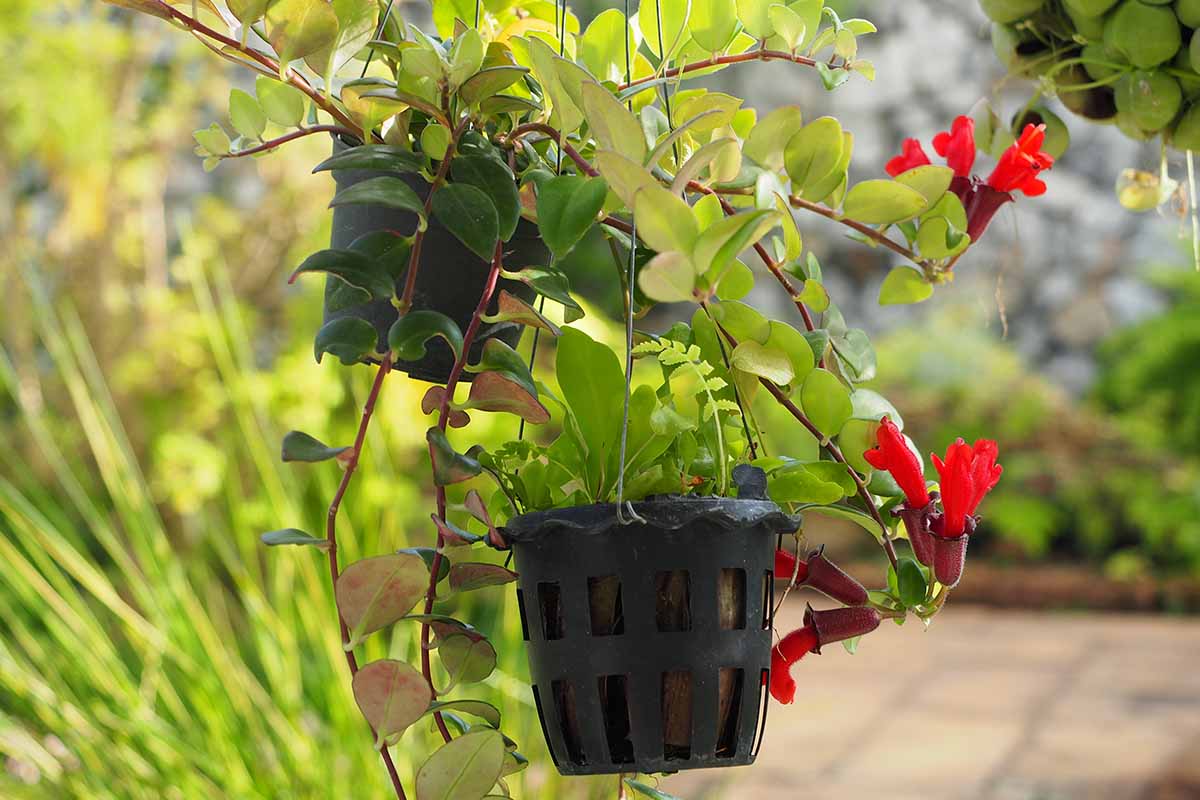
Make sure to water from the bottom or at the soil level, never from overhead. Allow the excess to drain thoroughly and then discard it.
Pooled water at the bottom of a planter or in the saucer below it can cause root rot, which is fatal and to be avoided at all costs.
Also, use tepid rather than cold water, especially when the plant is in bloom and extra susceptible to shock from chilly soil.
In general, you’ll probably need to water about once a week, though you should typically lengthen the interval between bouts of watering throughout the dormant days of winter.
At that point, once every two weeks should be ample, but test that soil moisture to be sure!
Fertilizer
Every couple of months, plan to give your plant a boost by applying a mild, balanced houseplant fertilizer according to the manufacturer’s instructions. It may be either liquid or granular.
Halt the fertilizer applications in the winter, though. Apply it just once towards the end of the season, as the plant begins to come out of dormancy.
I’m a fan of Dr. Earth Pure Gold Pump and Grow all-purpose plant food, available from Gardener’s Supply Company in a 16-ounce bottle.
Growing Tips
- Grow in well-draining potting mix.
- Provide bright, indirect light.
- Maintain humidity levels of between 30 and 50 percent.
Pruning and Maintenance
There is a bit of maintenance involved with lipstick plants, especially if you’re aiming for full, lush growth and optimized flowering potential.
First, to prevent infection by harmful pathogens, it’s important to use sterile scissors or clippers to cut off and discard any yellow, brittle, or wilting leaves or stems.
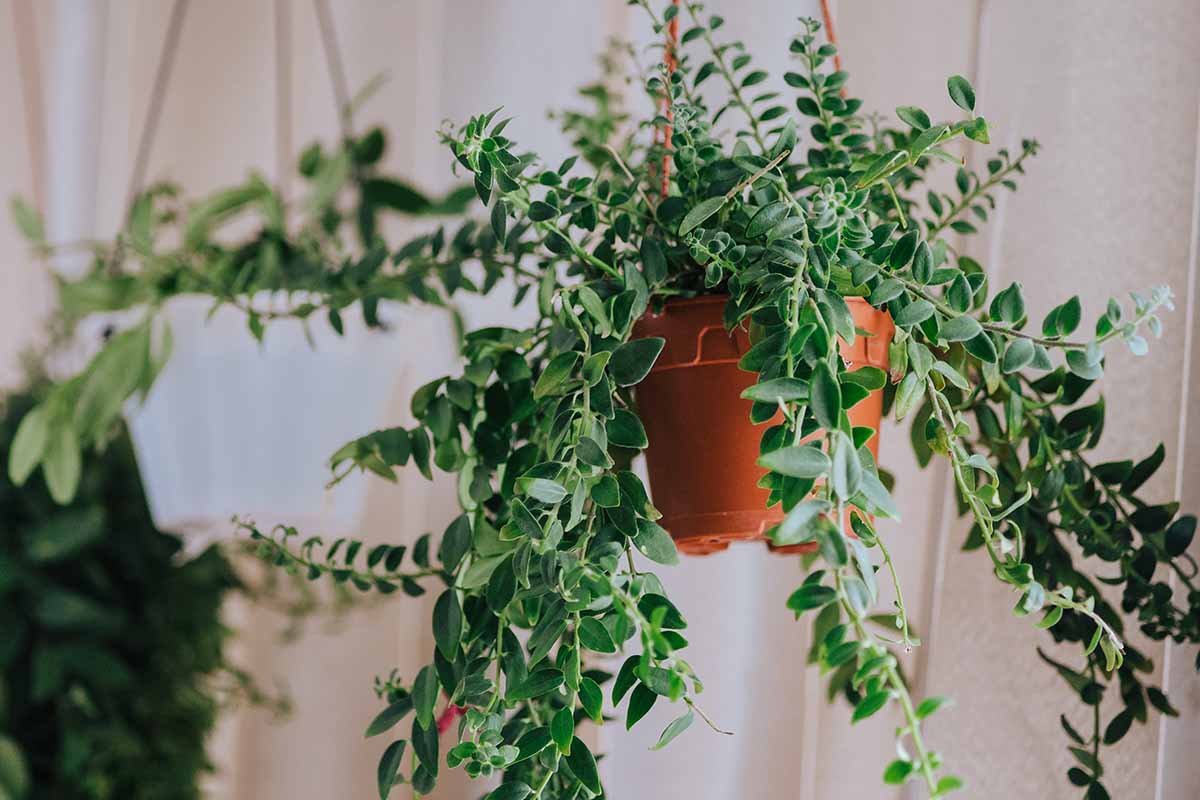
Resist the temptation to pull leaves off with your hands as you walk by, since you may uproot the whole vine or damage the stem in the process.
If you’re fortunate enough to grow a thriving lipstick plant with lots of stems, go ahead and prune the ends to encourage the plant to grow fuller. Do this after flowering or during the spring and summer when the plant is actively growing.
Deadhead the spent blooms to maintain a tidy appearance.
Your lipstick plant will eventually need to be transplanted into a larger pot, but don’t rush this. These plants grow and flower best when they’re a bit potbound.
Only repot into a new container that’s one size larger. If it’s roomier than that, the excess volume of added potting mix is likely to trap and hold extra water instead of allowing it to drain.
Always give the plant a drink of water the day ahead of repotting. This will help minimize transplant shock.
If you place your plant outdoors during the summer months, select a location out of direct sun and make sure to bring it back indoors when temperatures drop to 60°F.
Lipstick Vine Cultivars to Select
You might be lucky enough to score some of the more unusual varieties at a local nursery or from a fellow collector.
But the red-blooming A. radicans species is most readily available for casual gardeners to purchase.
Usually the plants are just listed as “lipstick vine.”
You can find plants in four-inch black plastic hanging pots from Thorsen’s Greenhouse via Walmart.
A few types to look out for include:
Black Pagoda
A. longicaulis, aka Black Pagoda, features dark green, mottled foliage with purple undersides. The flowers are orangey-red.
You can find this stunner available at Walmart in six-inch pots.
Cassiopeia
A. fulgens (syn. A. evrardii) ‘Cassiopeia’ sports brilliant red flowers (think Marilyn Monroe’s classic lipstick shade) bursting from dark purple tubes.
Curly
A. radicans ‘Curly’ has vines and leaves that twist and turn. Flowers are bright red.
Mona Lisa
‘Mona Lisa’ (A. radicans) features orangey-red blooms and dark green leaves.
You can find ‘Mona Lisa’ available in four-inch pots at Walmart.
One that I am currently shopping for (do let me know if you spot one for sale in East Tennessee!) is A. radicans ‘Variegata,’ which has green, twisted leaves that are streaked with white. Its showy blooms are my favorite color, red-orange.
Managing Pests and Disease
Grown as houseplants, lipstick vines don’t often encounter issues with pests or disease, but there are a few to watch for and prevent where possible:
Pests
Like other houseplants that prefer humid conditions and moist soil, lipstick plants are vulnerable to aphids, mealybugs, scale, and spider mites.
Make sure to remove any insect pests ahead of bringing houseplants back indoors ahead of cool weather.
If you’ve spotted one or more of these houseplant assailants, you can check out our guides to managing aphid, mealybug, scale, and spider mite infestations for tips on identifying, preventing, and removing each type of insect.
Disease
Too much or too little humidity, too little light, and too-cold temperatures are the most threatening foes for lipstick vines.
There are a few diseases you will need to keep an eye out for:
Leaf Spot
Tiny brown marks on the leaves are the first indication of leaf spot, which is caused by a group of fungi that exploit overly moist conditions in warm weather.
If your lipstick plant has spent time outdoors in the warm months, that may be where it picked up the infection.
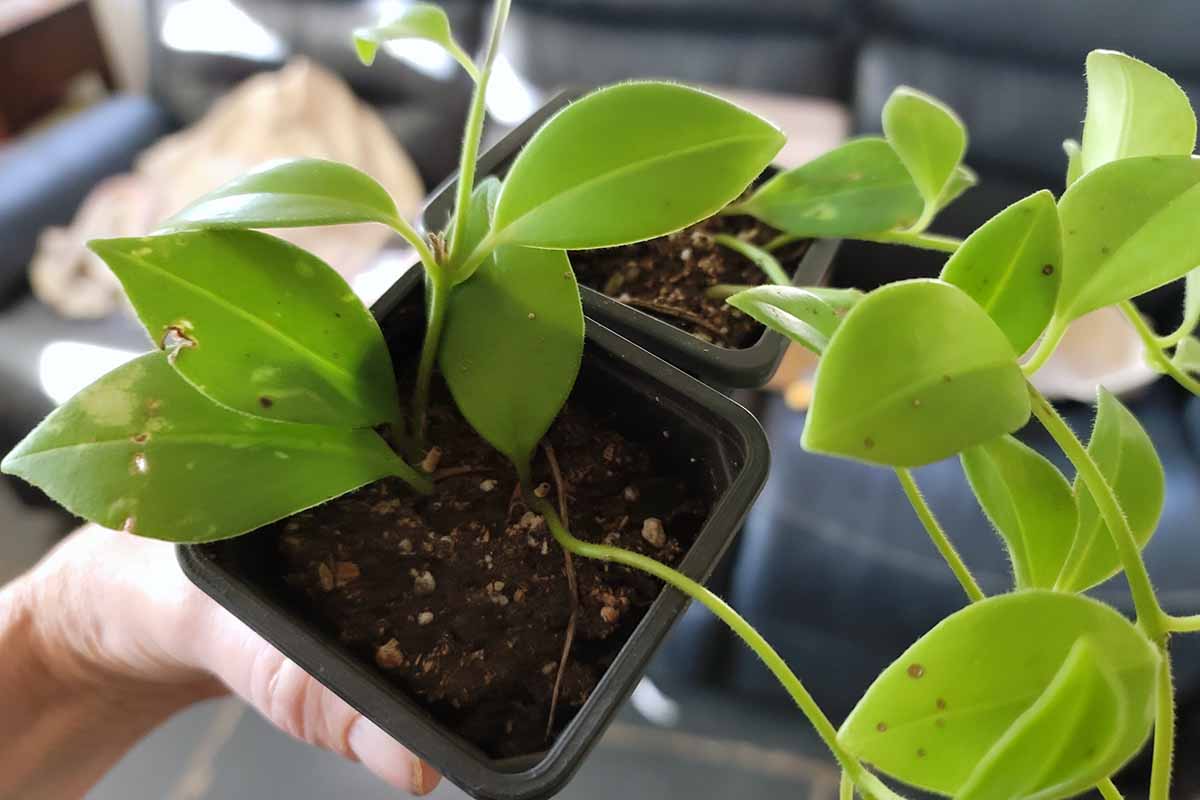
That’s what happened to my lipstick plant, though thankfully only a couple of leaves were affected and it was easy to eliminate the problem.
Indoors, watch the way you water to avoid leaf spots. Ideally, you should water at the soil surface, not from overhead.
If you tend to splash water about while you complete your watering chores, consider watering lipstick plants from the bottom.
If you notice you often get a bit of water on the leaves, it’s a good idea to only water early in the day, which gives the leaves ample time to dry.
You can treat leaf spot with neem oil, following the manufacturer’s instructions. Monterey 70 percent Neem Oil is the one I use.
You can find it from Arbico Organics in containers of various sizes, some of them cost-saving concentrates that will need to be diluted prior to use.
Powdery Mildew
A typically manageable disease that can afflict lipstick plants, powdery mildew looks like a dusting of confectioners’ sugar on the leaves or stems.
You can usually take care of a mild case by wiping the leaves clean with a damp cotton ball or applying neem oil.
To learn more about preventing, identifying, and eliminating this issue, consult our guide.
Root Rot
Soil that’s waterlogged creates ideal conditions for root rot.
If your plant is languishing or you smell something rotten in the vicinity, check for slimy brown roots.
Sadly, if your lipstick vine has root rot, you’ll need to swiftly and decisively remove and destroy it, and toss the mix it’s growing in at the same time.
Be sure to sanitize the container if you plan to reuse it.
Best Uses of Lipstick Vines
If you love the look of flowering plants in hanging baskets on a patio or in a gazebo and you would like to create the same effect indoors, lipstick vines can deliver.
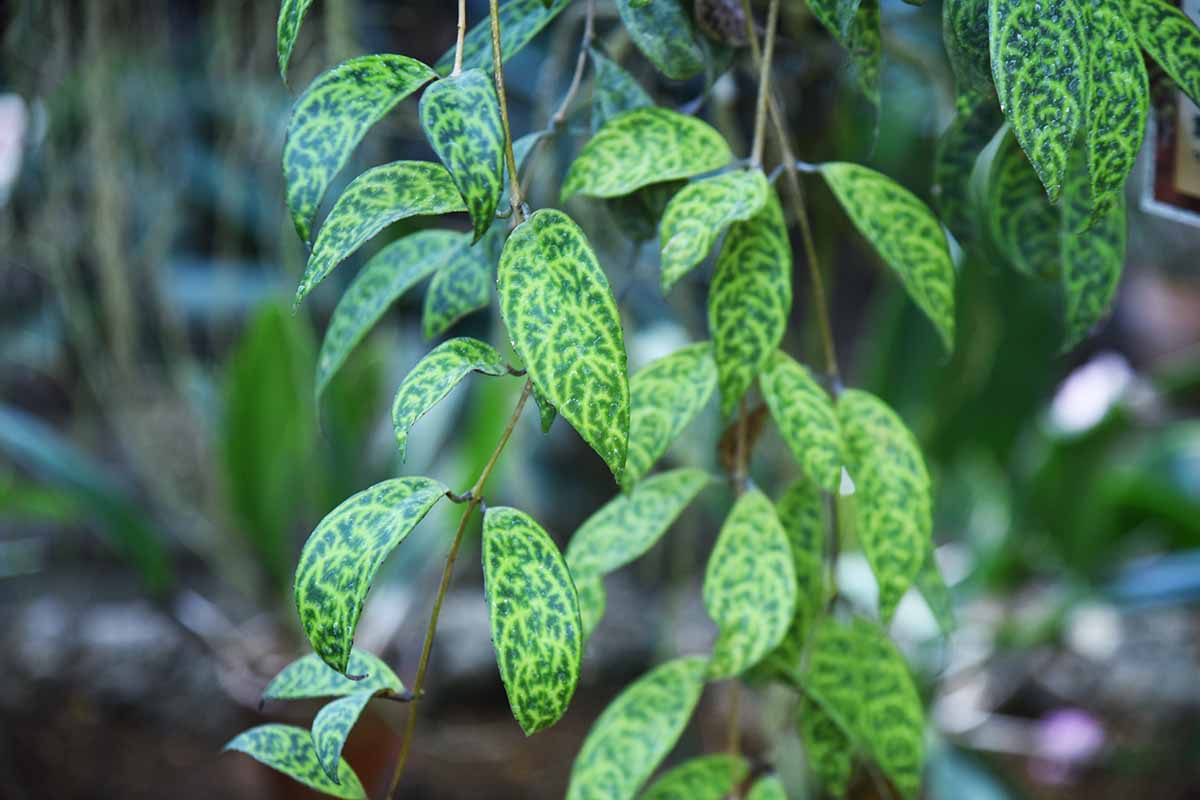
Of course, they do require adequate humidity, indirect bright light, and stable indoor temperatures.
But anywhere that you can provide those conditions, you can enjoy the bright, shiny leaves and colorful, quirky blooms that are sure to lift one’s mood.
Try hanging a solo lipstick plant beneath a skylight on the upstairs landing or in a sunroom in a spot that receives indirect sunlight.
Or set it on top of a shelf a few feet from a window in a brightly lit bathroom or the kitchen.
Also, you could experiment with growing several in a set of flat-backed containers hanging on a wall, with the vines draping down the walls and accenting the room with vibrant color when they bloom.
Quick Reference Growing Guide
| Plant Type: | Flowering vine | Flower/Foliage Color: | Orange-red, orange-yellow, red, purple, yellow; green, variegated |
| Native to: | Asia | Maintenance: | Moderate |
| Hardiness (USDA Zones): | 10-11 | Soil Type: | Soilless African violet potting mix |
| Exposure: | Bright, indirect light | Soil pH: | 5.5-6.5 |
| Time to Maturity: | 3-6 years | Soil Drainage: | Well-draining |
| Planting Depth: | Crown even with soil surface | Uses: | Hanging basket, houseplant, landscape (Zones 10-12) |
| Length: | Vines up to 3 feet | Order: | Lamiales |
| Growth Rate: | Fast | Family: | Gesneriaceae |
| Water Needs: | Moderate | Genus: | Aeschynanthus |
| Common Pests and Diseases: | Aphids, mealybugs, scale, spider mites, thrips; Leaf spot, powdery mildew, root rot | Species: | Fulgens, longicaulis, radicans |
A Kiss of Houseplant Color
Growing plants prized for their flowers indoors does tend to add a degree of difficulty to the houseplant cultivation process.
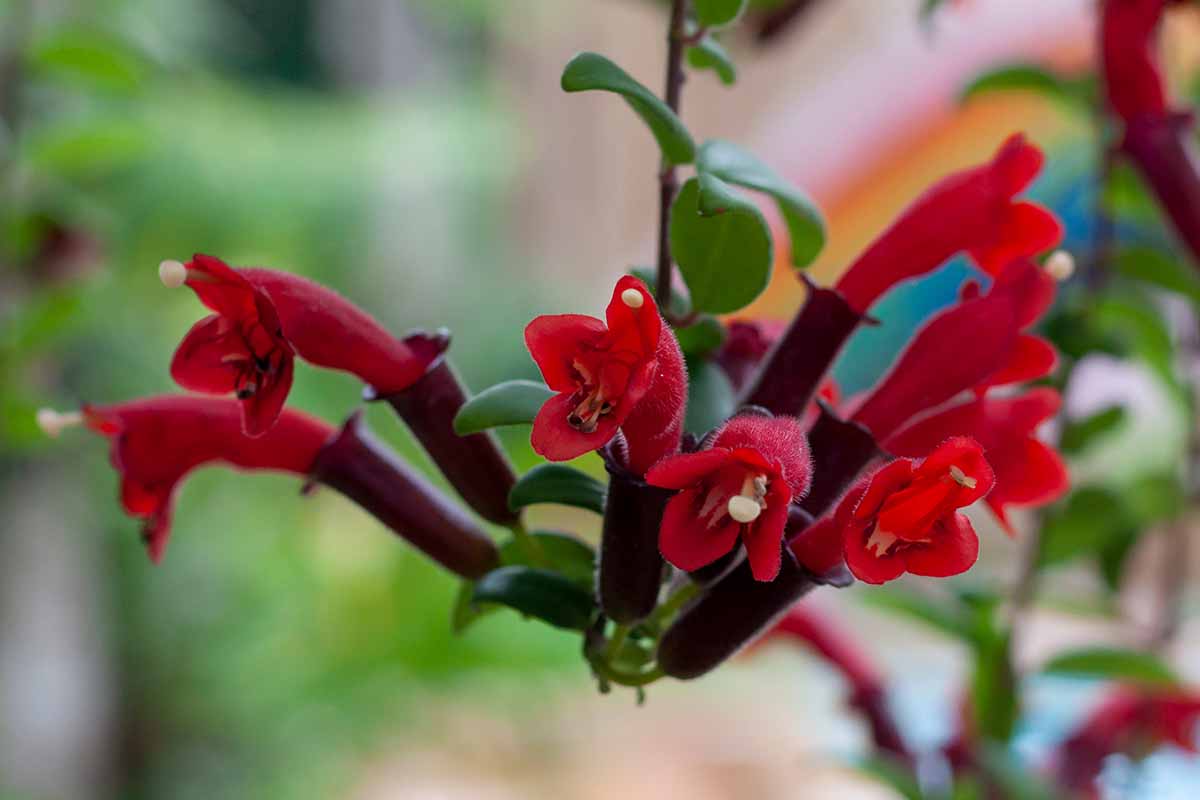
But in my book, the quirky tubular bloom shape and elegant trailing vines of these plants offset any extra effort required to care for them properly.
Do you have experience with this beautiful, unusual indoor plant? If so, we’d love to hear from you in the comments below, and we’re here to field your lipstick plant questions!
If you’re seeking more guidance on selecting and caring for other indoor plants known for their blooms, be sure to read these guides next:

